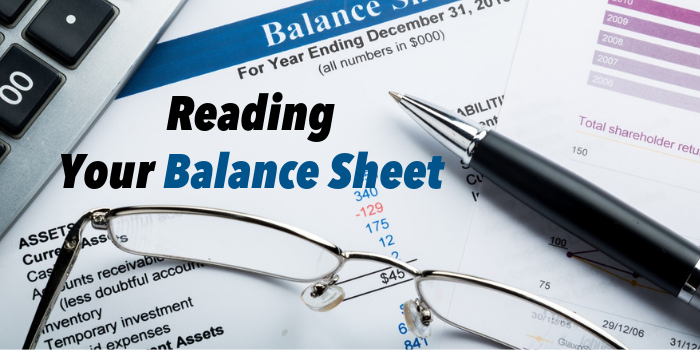A balance sheet is a monthly snapshot of the cumulative financial standing of an association.
Though it may seem overwhelming or confusing, it’s not something to be quickly gazed over. If members of the board don’t understand how to read the balance sheet, you run the risk of accidentally spending more than is allotted for a specific budget period. It can also be a tool for examining your associations reserve funds and anticipating those needs. This basic guide will help you know how to effectively read your balance sheet so that you can gauge the overall financial health of your association.
Here are a few basic terms that will simplify how you view your balance sheet.
Assets = Liabilities + Owners Equity
- Assets are the positives available to you in your account – the cash, all of the investments, including the reserve fund.
- Liabilities are the negatives in your account – the money that your HOA paid in bills, taxes etc., including funds that are due, such as unpaid bills, money that you’ve paid that are not yet owed (prepaid), and other operating expenses.
- Equity is a term used to loosely represent the monetary value of a business; it might show up on a balance sheet as retained earnings or losses, or as current year income or loss. It is essentially the residual interest in the assets after deducting all of the liabilities.
Simply put, a balance sheet should reflect positive equity and should balance. If an association has more in savings, cash, and funds to collect than it has to pay, it has a positive equity. If the community owes more money that it has and is able to collect, it has negative equity. A board should not be spending more than it is receiving. Furthermore, the board should avoid dipping into reserve funds unless absolutely necessary.
The balance sheet reflects the day-to day-operations of your community. Understanding it will help you assess what is working and what is not working. If you don’t like what you see, discuss the issue with your property manager and find out what expenses can be cut. Reduce what you are spending on vendors and supplies, or consider increasing assessments. In many cases, problems start when assessments are not being collected efficiently or quickly enough, so consider starting there.







